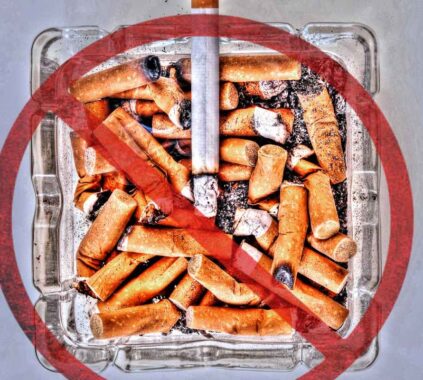Smoking has long been a common and deadly habit that hurts cultures worldwide. Despite well-documented health hazards and growing public awareness of the perils of tobacco, millions of people continue to suffer from addiction. Quitting smoking is a complex undertaking due to the allure of nicotine addiction and social and psychological issues. Individuals can, however, overcome the grip of smoking and live healthier, smoke-free lives with the correct tactics and assistance. This article will investigate effective strategies for overcoming smoking and cravings, allowing folks to begin their journey toward a smoke-free future.
The Dangerous Cycle of Cigarette Addiction
Before delving into quitting tactics, it is critical to understand the vicious cycle of smoking addiction. Nicotine, the addictive ingredient in cigarettes, affects brain chemistry, resulting in physical dependence. As a result, smokers experience withdrawal symptoms such as irritation, anxiety, and extreme cravings when attempting to quit smoking. These symptoms cause people to return to smoking, continuing the addiction cycle.
Establishing a firm quit date
Setting a clear and precise quit date is one of the most critical steps in quitting smoking. This date gives people a target to aim towards as they psychologically prepare for the hardships ahead. The quit date should be carefully picked, leaving adequate preparation time but not so distant in the future that motivation wanes. Informing friends and family about the planned quit date can also give a support network, making the trip less lonely and more accountable.
Seeking Professional Help
Quitting smoking is complex, and obtaining expert help can significantly improve your chances of success. Health experts such as doctors or counselors can provide individualized guidance and assistance. They can also prescribe nicotine replacement therapies (NRTs) or other medications to help with withdrawal symptoms and cravings when quitting.
Identification of Triggers and Coping Mechanisms
Understanding the triggers that contribute to smoking desires is essential for successful cessation. Stress, social circumstances, and specific settings are all common causes. Individuals can create healthy coping methods to manage these triggers after they have been identified. Deep breathing techniques, mindfulness, and physical activities can distract attention from cravings and relieve stress.
Establishing a Support Network
Establishing a robust support system is critical when commencing a smoke-free path. Friends, family, or support groups can offer encouragement and understanding during difficult times. Online forums and community organizations can also provide a sense of companionship and shared experiences, telling people that they are not alone in their efforts to quit smoking.
Adopting Healthier Lifestyle Changes
Quitting smoking provides an opportunity to live a healthier lifestyle in general. Regular exercise distracts from smoking urges and promotes physical and mental health. Furthermore, implementing dietary changes, such as boosting fruits and vegetables, can improve the body’s ability to recover from smoking-related damage.

Use of Nicotine Replacement Therapy (NRT)
Nicotine replacement treatments (NRTs) are helpful strategies for reducing nicotine dependence and managing withdrawal symptoms. NRTs are available in various forms, including patches, gums, tablets, and nasal sprays. They work by delivering controlled levels of nicotine without the toxic chemicals inherent in cigarettes, making quitting more manageable.
Cognitive Behavioural Therapy
Individual or group behavioral therapy can be effective for smokers attempting to quit. This therapy focuses on identifying and changing harmful smoking-related mental patterns and behaviors. Individuals can better handle the hurdles of stopping by adopting healthier coping methods and developing a positive outlook.
Refraining from Alcohol and Other Triggers
Alcohol drinking might make it difficult for many people to quit smoking. Alcohol decreases inhibitions, which may lead to cravings. It is best to avoid environments where alcohol is prominent, especially in the early stages of stopping.
Monitoring Progress
Keeping track of your progress can be exceptionally motivating. Documenting milestones and achievements through a journal, mobile app, or support group promotes a sense of accomplishment and strengthens the commitment to a smoke-free life.
Conclusion
Conquering smoking and cravings is a challenging but attainable goal. Individuals can break free from the chains of nicotine addiction with determination, support, and successful tactics. Individuals can achieve a smoke-free life by choosing a quit date, getting expert help, identifying triggers, and adopting healthy habits. Remember that while the path may be difficult, the benefits of increased health and well-being are tremendous.
Last modified: August 25, 2023






